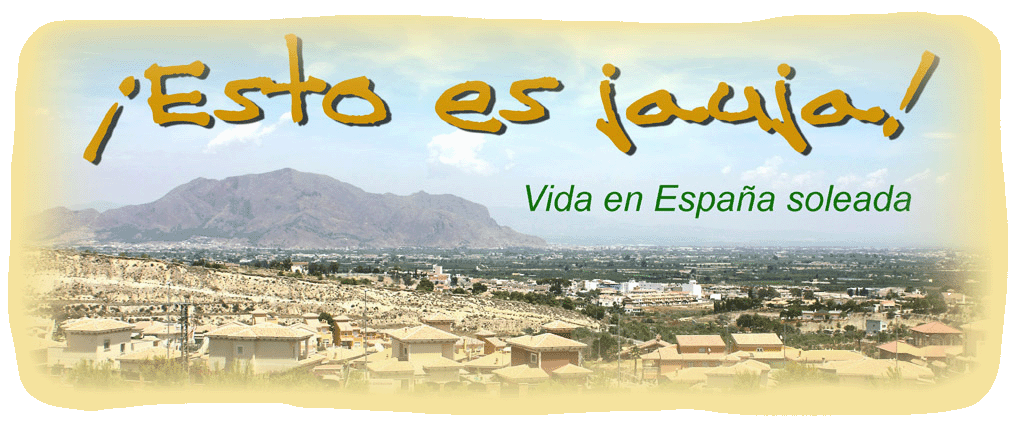In our class last week, Eduardo explained that the citrus tree is not a native of this area and in fact is a relatively recent introduction. Previously the huerta, or kitchen garden, would have been used to solely to grow vegetables of various types; beans, and squashes for example which formed the the staple diet of people in the region.
This very much ties in with what the ladies from the other adult education classes have told us i.e. when they were young, they mainly ate vegetables and only had meat on the table a few times during the year – Christmas, Easter and other special occasions.
Eduardo then went on to explain the system of irrigation including the use of the noria.
Noria is a word derived from the Arab phrase, “na’ura”, meaning to weep without reason.
 There are three types of noria used in this region; the wind driven ones which you see around the area of Cartegena, animal driven ones (the so called norias de sangre because the animals that drove them had a short life of about two years) and those that are driven by the flow of a stream.
There are three types of noria used in this region; the wind driven ones which you see around the area of Cartegena, animal driven ones (the so called norias de sangre because the animals that drove them had a short life of about two years) and those that are driven by the flow of a stream.
The ones you see on the coast were used to lift sea water into the salt pans; those inland were used for irrigation.
A water wheel which is used to run e.g. a flour mill has a water race at the top where a stream or river has been narrowed. The water turns the wheel and exits at the bottom.
In the noria, the water comes from the bottom and is deposited at the top – a complete reverse of the type of wheel used for power.
Whereas the conventional water-wheel is used, like the fan of a windmill or the efforts of an ox, to turn an axle and drive a machine, the norias on the Rio Segura are the machine.
The rim of the wheel consists of a series of curved wooden boxes, fitted with holes.
The rims forming either edge of the noria look  solid but in reality each one consists of a continuous series of curved wooden boxes. These boxes have small openings at the leading end of their outer vertical face – the leading end being the one which enters the stream first – and they have even smaller openings at the leading end of the curved, outer side of the wheel.
solid but in reality each one consists of a continuous series of curved wooden boxes. These boxes have small openings at the leading end of their outer vertical face – the leading end being the one which enters the stream first – and they have even smaller openings at the leading end of the curved, outer side of the wheel.
To drive them, the noria have paddles. As the stream meets the paddles set into the wheel between each pair of curved wooden boxes it pushes against them. It does not push hard enough to provide an adequate force for grinding wheat, fulling cloth, or pumping the bellows at a foundry, but it does push hard enough to turn the wheel.
As they descend into the stream,the boxes forming the rim of the wheel fill with water and as the wheel continues to turn, through the pressure of the stream against the next paddle in the cycle, the water-filled boxes are moved along.
On the wind and animal driven versions, rather than bucket, the norias, have clay pots on their circumference which are used to carry the water upwards. Rather cleverly, the pots have holes in the bottom which allow the water to displace the air thus allowing them to fill as they drive through the water.
upwards. Rather cleverly, the pots have holes in the bottom which allow the water to displace the air thus allowing them to fill as they drive through the water.
The noria wasn’t just used in Spain though. On the River Orontes at Hama in Syria, there are 17 huge water wheels which supplied water to the town above.
From the town’s crest you can deduce that Bigastro once had a wind driven noria which was situated near the polideportivo. This function is now carried out by an electric pump.


No comments:
Post a Comment